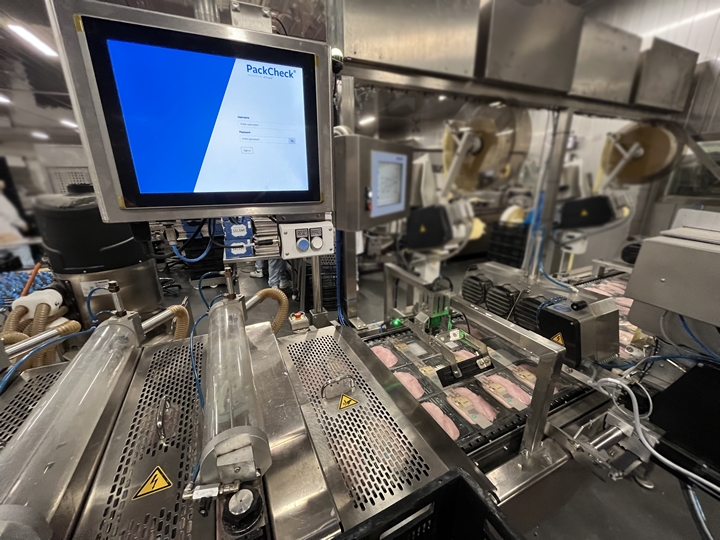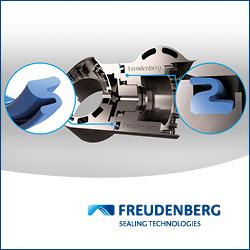Ensuring safety and accuracy of correct packaging is a high priority in the food industry. In addition to the packaging quality, the high variation of different packaging and labeling is also a challenge.
 Machine Vision meets every taste
Machine Vision meets every taste

Case Study from | MVTec
Automation and digitization are also advancing in the food industry. Inline quality management is benefiting from this in particular. This is because continuously monitoring packaging production with machine vision increases efficiency and significantly reduces the number of recalls. With the support of MVTec Software GmbH, the company PackCheck has developed a modular solution for ensuring packaging quality.
Ensuring safety and accuracy of correct packaging is a high priority in the food industry. In addition to the packaging quality, the high variation of different packaging and labeling is also a challenge. These challenges can be solved through automation. "In automation projects, our customers want to benefit on one hand from classic advantages such as optimal utilization of employee capacity, increased productivity, as well as less rejects. On the other hand, and this is particularly important for the food industry, producers are looking for end-to-end inline quality assurance for the packaging process," explains Peter de Jong, Sales Manager and Co-Owner, of PackCheck BV. The Netherlands-based company was founded in 2010 and provides visual quality control solutions for the food and beverage industries, agribusiness, and logistics.
In exchanges with customers, PackCheck experienced that they were looking for ways to ensure consistently correct packaging in all their packaging lines. This also involves verification of bar & data codes in addition to package quality. To meet these customer needs, PackCheck developed a completely new modular inspection platform. The machine-vision-based platform provides a complete and seamless overview of the packaging process. For this purpose, inspection points are set up at relevant positions along the packaging line. Each checkpoint can integrate up to four cameras, which provide a complete inline quality inspection of the packaging and labeling process. In addition to the hardware, the ViTrack system control software developed by PackCheck is used. Within that software, the MVTec HALCON machine vision software takes care of the image processing. For clarification of open questions and as a sparring partner, PackCheck counted upon the expertise of MVTec, the company that contributes the machine vision software.
Modular machine vision solution enables end-to-end quality control
PackCheck developed the inspection platform for food producers that have multiple production lines. "Our solution can be used at any point in a packaging line but also in a cleanroom environment. The flexibility and speed of the inspection platform also makes it possible to inspect many different products in a short time," explains de Jong. The inspection tasks performed by the machine-vision-based platform exceed the number of tasks that humans could perform. For example, in production lines that are not fully automated, quality control is only performed by employees on a sample basis. In addition, the human eye can never keep up with the speed, consistent objectivity, as well as endurance of an automated solution. As a result, products with quality deficiencies end up in retail, leading to product recalls. These are caused by packaging defects as well as incorrect or missing allergen markings on packaging or labels. The goal of companies is to minimize the number of recalls as much as possible through inline quality control, while gaining even better insight into their own processes and using them for "forensic purposes." This means that conclusions can be drawn in the event of frequently occurring defects. This improves the production process and can, for example, reduce waste.

Consulting services directly from the manufacturer
Machine vision offers the advantage that it can be used for different applications. Customers using the inspection platform need machine vision for two applications: quality control of packaging and for checking labels and markings. The technology is capable of performing surface inspection in milliseconds, recognizing codes and characters, and reading them. This means that all information about a product can be viewed at any time. This includes, for example, the packaging quality, whereabouts, best-before date, and the listing of allergens. PackCheck chose MVTec HALCON as its machine vision software. "When developing the scalable, modular platform, it was important to find a software solution that could be fully integrated. We also wanted to be hardware-independent and use programmable software in order to react flexibly to different circumstances. Of course, the fact that the software had to be particularly powerful was another factor. With all these requirements, we quickly came across HALCON," de Jong explains the decision-making process. The HALCON software from MVTec, a leading international manufacturer of software for industrial image processing based in Munich, features a library of over 2100 operators. In addition to the software, PackCheck also took advantage of MVTec's consulting services. "Together with MVTec's experts, we were able to overcome the final structural challenges. In particular, this involved practical questions about image processing in matching applications," explains de Jong.
Combined machine vision methods ensure robust detection rates
The modular inspection system consists of camera systems with up to four cameras each and a track controller at the relevant points on the production line. The inspection platform has a modular design, which means that theoretically an infinite number of camera systems can be used by a customer. The system is controlled by the ViTrack software developed by PackCheck. A robust interface is required for smooth interaction between hardware and software. Here, PackCheck uses OPC UA. OPC UA is a machine-to-machine communication protocol for industrial automation. The standard simplifies the networking of devices, automation systems and software applications.
In practice, the platform works as follows: First, the inspection program for the product to be inspected is loaded; from the customer's point of view, this simply involves selecting the relevant product on the terminal. The relevant information and parameters for the respective product are stored in a JSON file (JavaScript Object Notation). The tracking controller reports to the vision controller which JSON file has to be loaded.
Once the system knows which product is being inspected, the inspection process begins. When the product moves into the camera’s field of view, an electrical signal is triggered. This starts the image acquisition of the camera and stores the image in the local memory. The electrical signal is also sent to the tracking controller. This creates an ID and sends it to the vision controller. The actual inspection of the acquired image is then carried out in the vision controller based on the inspection program using machine vision. The result is then sent back to the tracking controller. Here, among other things, the OPC UA interface is used. This ensures that the results of the inspection are securely transmitted to the tracking controller. By comparing the results with the ID, it is always clear which product is involved. It’s now the task of the tracking controller to proceed correctly with handling of the product based on the inspection result provided by machine vision. This means that if the product is faulty, it is rejected, if it is OK, it is processed further. Machine vision processing with HALCON is executed on the vision controller. For this purpose, the machine vision technologies blob analysis, matching, bar and data code reading, or OCR are available, depending on the requirements. OCR (Optical Character Recognition) allows texts to be recognized and classified. This is used, for example, to read the best-before date and listing of allergens on the label. Reading bar codes and data codes reveals whether the product in question has the correct label. Blob analysis and matching methods can be used to reliably inspect the surface of the package. This is done by comparing the product against the template. The modular inspection platform is capable of performing these complex inspection processes at a speed of 100 packages per minute.
Seamless quality control is also a consumer requirement
The platform has already been in use by companies in the food industry since the beginning of 2023. Each of these companies has automated the inspection of several production lines, each with different products, using the inspection platform. PackCheck is very satisfied with the results and customer feedback. "Our customers are achieving their economic goals with the platform, such as improved efficiency, better employee utilization, and less waste. The inline quality inspection really checks every single product, resulting in a drastic reduction in the number of product recalls. This is a response from food producers to demands from critical consumers," explains de Jong. According to de Jong, solutions based on machine vision have a major advantage, because they provide interesting insights into the company's own production. With machine vision, many other processes can be automated for the benefit of customers.
About MVTec Software GmbH
MVTec is a leading manufacturer of standard software for machine vision. MVTec products are used in a wide range of industries, such as semiconductor and electronics manufacturing, battery production, agriculture and food, as well as logistics. They enable applications like surface inspection, optical quality control, robot guidance, identification, measurement, classification, and more. By providing modern technologies such as 3D vision, deep learning, and embedded vision, software by MVTec also enables new automation solutions for the Industrial Internet of Things aka Industry 4.0. With locations in Germany, the USA, France, China, and Taiwan, as well as an established network of international distributors, MVTec is represented in more than 35 countries worldwide. www.mvtec.com
The content & opinions in this article are the author’s and do not necessarily represent the views of RoboticsTomorrow

MVTec LLC
MVTec is a leading international manufacturer of software for machine vision used in all demanding areas of imaging like the semi-conductor industry, inspection, optical quality control, metrology, medicine or surveillance. In particular, software by MVTec enables new automation solutions in settings of the Industrial Internet of Things. MVTec is the developer and vendor of the general purpose machine vision software products HALCON and MERLIC.
Other Articles
Battery inspection using machine vision - fast, reliable, and variable
Machine Vision Technology Update
Embedded Vision
More about MVTec LLC
Featured Product

